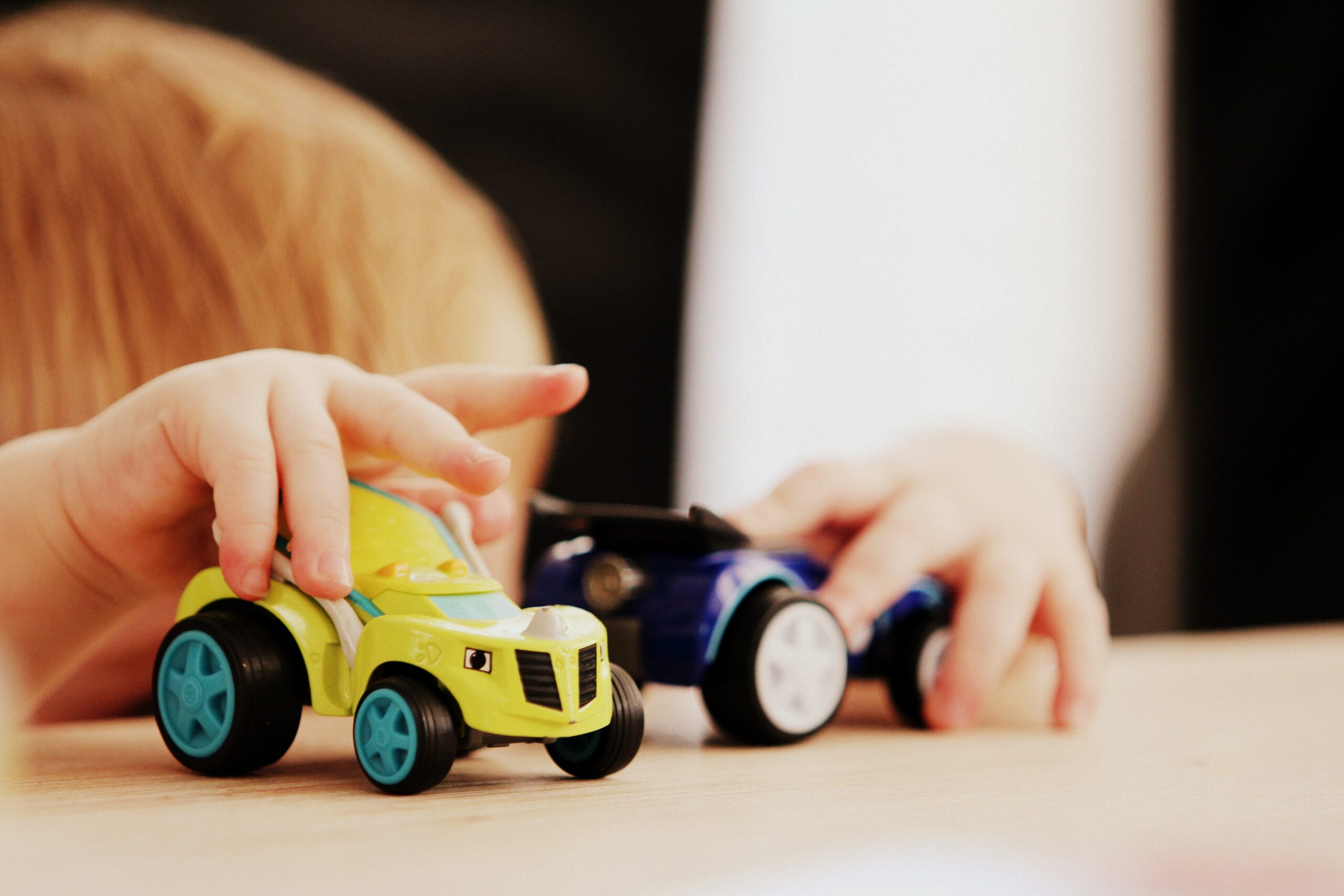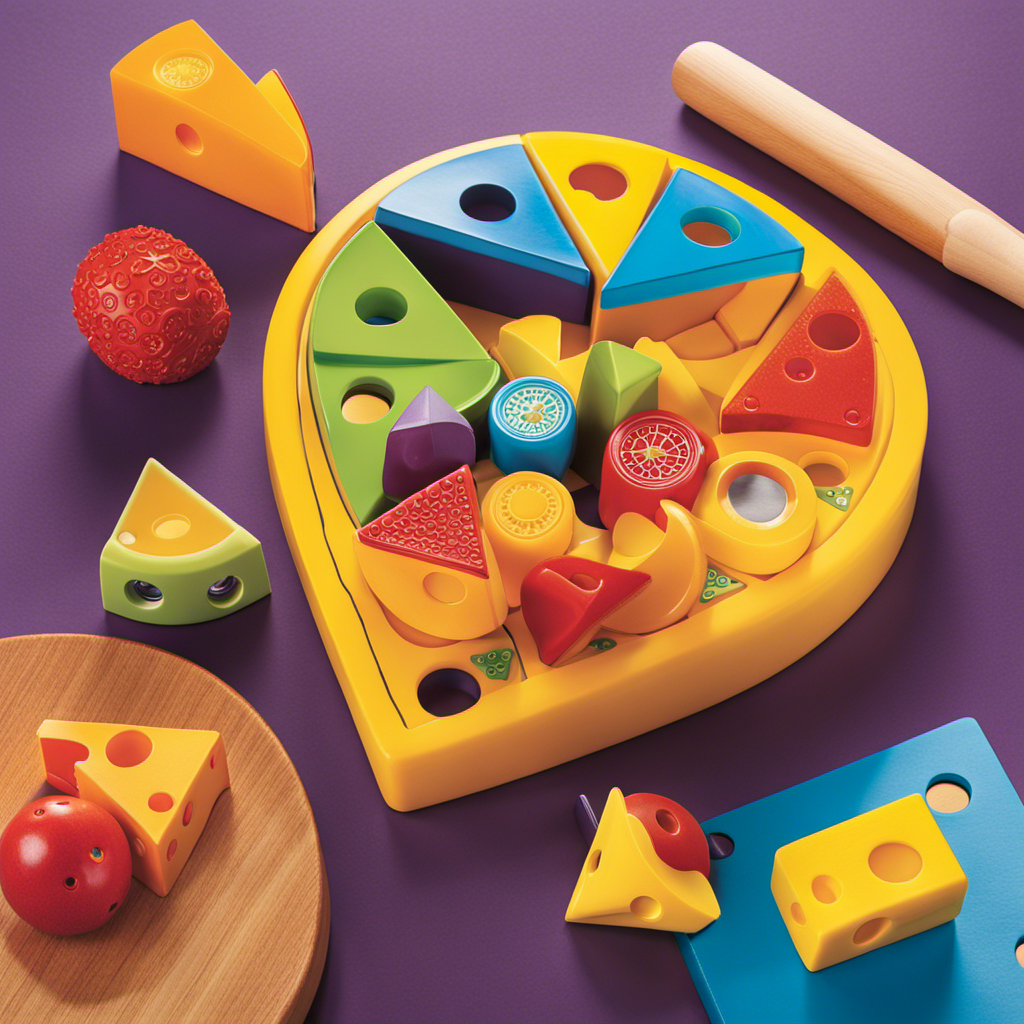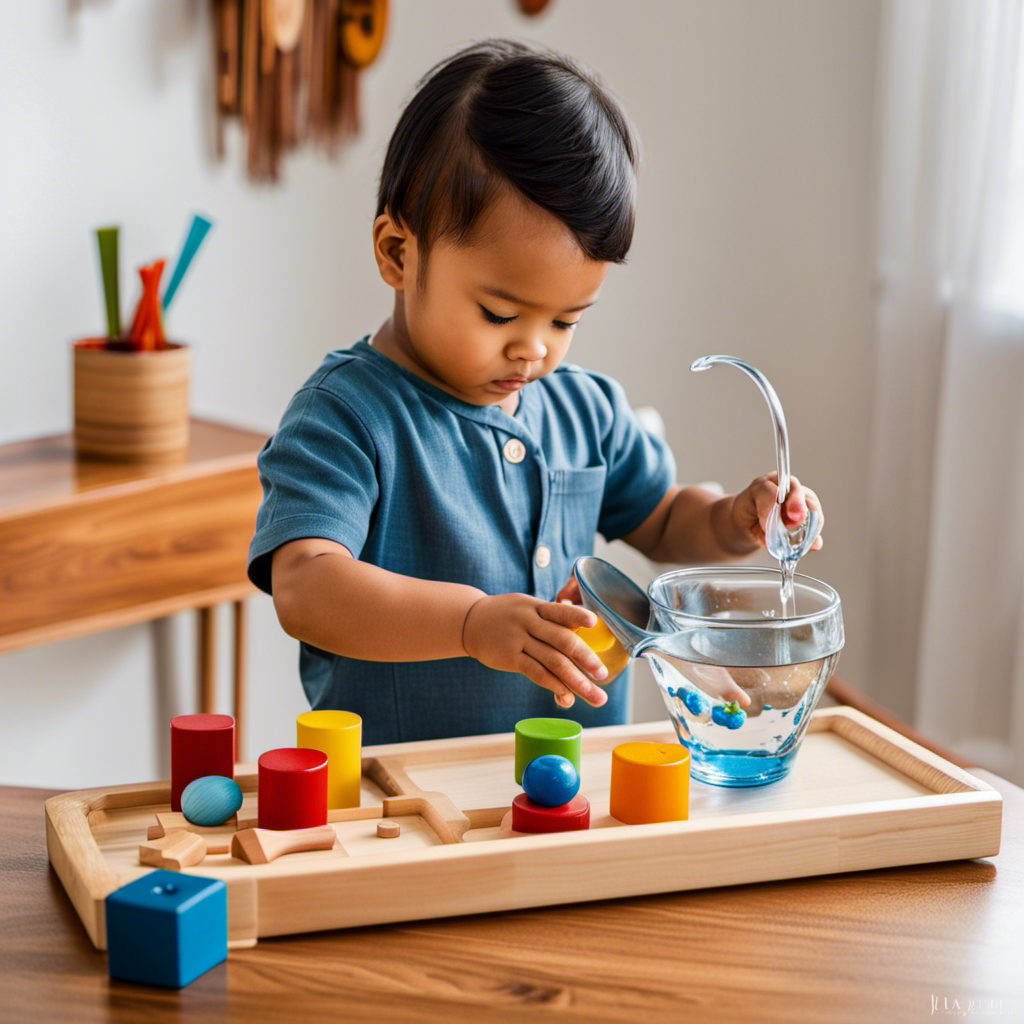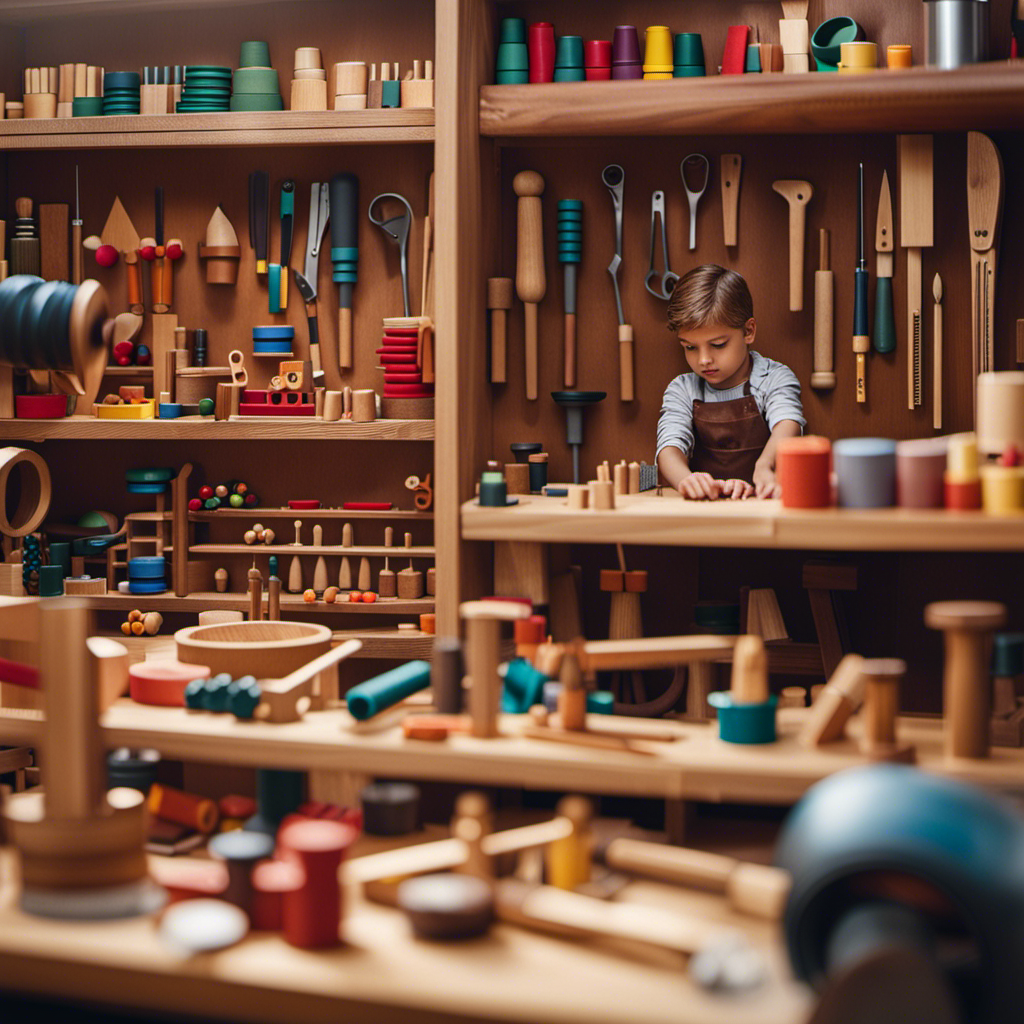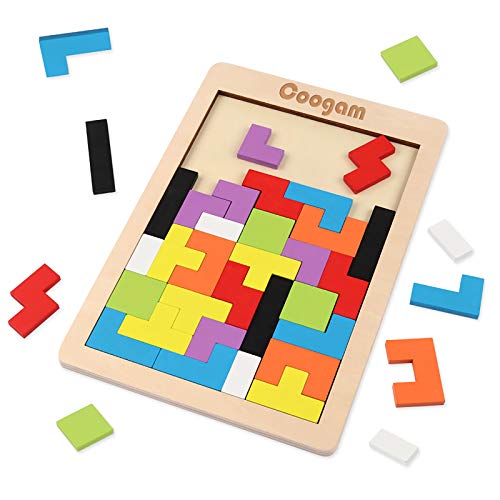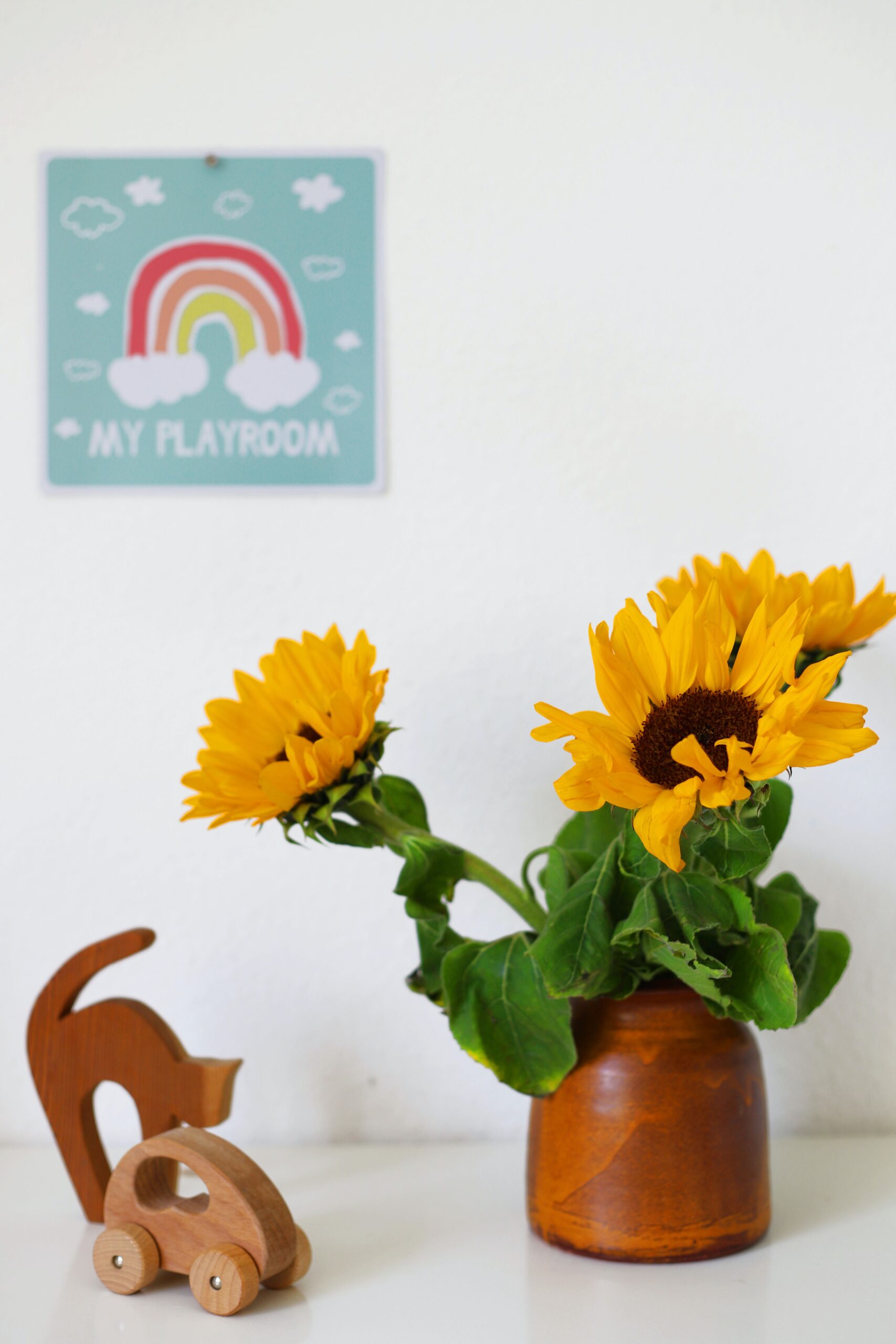Greetings!
Have you ever wanted to create personalized, natural, and engaging toys for your little ones?
Well, look no further! In this article, I’ll be sharing some fantastic DIY Montessori toy ideas that are not only fun but also promote active learning.
Montessori toys are known for their use of natural materials, which are not only safer and more durable but also provide tactile and sensory experiences for children.
So, let’s dive in and discover how to create these amazing toys that will captivate your child’s imagination and foster their development.
Key Takeaways
- Montessori toys made from natural materials like wood, silk, wool, and cotton are safer, more durable, and provide tactile and sensory experiences for children.
- Incorporating natural materials in Montessori toys helps children connect with nature, develop an appreciation for the environment, and make an environmentally conscious choice.
- Personalizing Montessori toys based on a child’s individual needs and interests allows for engaging and educational playtime.
- Introducing one Montessori activity at a time helps in skill mastery, tailoring activities to a child’s interests and abilities, and focused learning and skill development.
Benefits of Montessori Toys: Natural Materials and Child Development
Using natural materials in Montessori toys provides tactile and sensory experiences for children, helping them connect with nature and develop an appreciation for the environment. When children play with toys made from wood, silk, wool, and cotton, they can feel the natural textures and experience the different sensations these materials offer. This hands-on exploration stimulates their senses and enhances their understanding of the world around them.
Additionally, using natural materials in toys promotes a sense of environmental awareness. Children learn that these materials come from nature and can be renewed, unlike plastic toys that contribute to waste and pollution. By engaging with natural materials, children develop a deeper connection with the environment and learn to value its resources.
These experiences lay a strong foundation for their future environmental stewardship.
Incorporating Natural Materials for Sensory Experiences
I love how incorporating natural materials in my child’s toys provides rich sensory experiences. When my child plays with wooden blocks, they can feel the texture of the grain and hear the satisfying sound of them stacking together.
Silk and cotton dolls offer a soft and smooth touch, stimulating their sense of touch. Woolen balls provide a unique tactile experience, allowing them to explore different textures.
These natural materials not only engage their senses but also connect them with nature. By playing with toys made from natural materials, my child develops an appreciation for the environment and learns to value sustainable choices.
Moreover, these toys are safer and more durable than plastic alternatives. I am grateful for the opportunity to provide my child with toys that are both engaging and environmentally friendly.
Connecting With Nature: Montessori Toys and Environmental Awareness
By incorporating natural materials in my child’s playtime, they develop a deeper connection with nature and gain a greater understanding of the importance of environmental sustainability.
Natural materials like wood, silk, wool, and cotton provide a sensory experience that plastic toys cannot replicate. Playing with natural materials allows children to engage with the textures, scents, and colors of the natural world.
It fosters a sense of appreciation and respect for the environment. Montessori toys made from natural materials also have added benefits for child development, such as promoting fine motor skills and creativity.
By choosing toys made from natural materials, we make an environmentally conscious choice, reducing our carbon footprint and supporting sustainable practices.
Ultimately, incorporating natural materials in playtime not only benefits our children’s development but also instills in them a sense of responsibility to protect and preserve our planet for future generations.
Personalization and Individualized Learning for Montessori Toys
When customizing colors, shapes, and designs of Montessori toys, it allows for a tailored and individualized learning experience for my child. By personalizing these toys, I can cater to my child’s interests and preferences, making learning more engaging and enjoyable.
For example, if my child loves animals, I can choose Montessori toys with animal themes or designs. This not only captures their attention but also promotes their curiosity and knowledge about different animals.
Additionally, customizing the colors and shapes of the toys can help stimulate their senses and enhance their cognitive development.
Observing Preferences: Selecting Engaging Montessori Toys
Observing a child’s preferences helps in choosing Montessori toys that capture their interest and promote their curiosity and knowledge. When selecting engaging Montessori toys, it is important to consider what the child enjoys and what sparks their curiosity. By observing their preferences, we can ensure that we provide toys that align with their interests and keep them engaged in the learning process.
Some benefits of observing a child’s preferences include:
-
Personalized Learning: By understanding what the child likes, we can customize the toys to cater to their individual needs and interests. This helps in creating a more personalized learning experience and allows the child to explore their areas of interest.
-
Enhanced Engagement: When children are provided with toys that they enjoy, they are more likely to be actively engaged in the learning process. This promotes a sense of curiosity and motivates them to explore and learn.
-
Improved Knowledge Retention: When children are interested in the toys they are playing with, they are more likely to retain the knowledge they gain from those toys. By selecting toys that capture their interest, we can promote better knowledge retention and facilitate a deeper understanding of concepts.
Challenging Toys for Skill Development in Montessori Learning
To promote skill development in Montessori learning, I choose challenging toys that align with a child’s abilities and interests. These toys provide an opportunity for children to engage in activities that require problem-solving, critical thinking, and fine motor skills.
For example, puzzles with varying levels of difficulty help children develop their spatial awareness and cognitive abilities. Building blocks allow children to explore their creativity and develop their hand-eye coordination.
By selecting toys that are slightly above a child’s current skill level, I encourage them to stretch their abilities and learn new skills. It is important to strike a balance between providing a challenge and ensuring the child does not become frustrated.
Challenging toys in Montessori learning foster a sense of independence and confidence as children overcome obstacles and achieve success.
Fun and Educational: Incorporating Themes in Montessori Toys
I enjoy incorporating themes in the Montessori toys I choose because it makes playtime more fun and educational for children.
When children engage with toys that are centered around a theme, such as animals, nature, or transportation, it sparks their curiosity and imagination. They can explore and learn about different concepts and ideas through play.
For example, a toy set with animals can teach children about different species, their habitats, and their characteristics. By incorporating themes, children are able to make connections between what they learn through play and the real world, which enhances their understanding and retention of knowledge.
It also encourages language development as children engage in storytelling and role-playing based on the theme.
Overall, incorporating themes in Montessori toys creates a rich and immersive learning experience for children.
Customizing Montessori Toys: Colors, Shapes, and Designs
When customizing Montessori toys, I can choose different colors, shapes, and designs to create unique and tailored learning experiences for children.
By selecting vibrant colors, I can stimulate a child’s visual senses and make learning more exciting.
Choosing different shapes can help develop a child’s spatial awareness and problem-solving skills.
Adding personalized designs, such as a child’s favorite animal or character, can make the toy more relatable and foster a deeper connection with the learning process.
Customization allows me to cater to each child’s individual interests and preferences, making their learning journey more engaging and meaningful.
One Activity at a Time Approach for Montessori Learning
Focusing on one activity at a time allows for tailored learning experiences and promotes skill mastery in Montessori education.
When children are given the opportunity to concentrate on one activity, they can fully immerse themselves in the learning process. This approach allows educators to customize activities based on a child’s individual interests and abilities. By observing a child’s preferences, educators can select engaging activities that align with their unique learning style. This promotes a sense of ownership and motivation, as children are more likely to be invested in activities that they find interesting.
Additionally, focusing on one activity at a time enables children to develop a deep understanding of concepts and skills, as they are given the time and space to explore and practice. This approach fosters a love for learning and promotes the mastery of skills in Montessori education.
Tailoring Activities to a Child’s Interests and Abilities
In my experience with Montessori learning, I have found that tailoring activities to a child’s interests and abilities is crucial for their engagement and development. By observing a child’s preferences and incorporating toys or themes that they enjoy, we can make playtime more enjoyable and educational.
Here are three reasons why tailoring activities to a child’s interests and abilities is important:
-
Increased motivation: When children are engaged in activities that align with their interests, they are more motivated to explore and learn. This motivation leads to a deeper understanding and retention of knowledge.
-
Skill development: By providing activities that align with a child’s abilities, we can challenge them to develop new skills and build upon their existing knowledge. This personalized approach allows for targeted skill development and growth.
-
Confidence building: When children are successful in activities that they are interested in and capable of, it boosts their confidence. This confidence then spills over into other areas of their learning, creating a positive cycle of self-assurance and achievement.
Following a Child’s Lead: Exploring and Learning in Montessori Playtime
As a parent, I find that following my child’s lead during playtime allows them to explore and learn in their own unique way.
When I observe my child playing, I notice the activities they are naturally drawn to and the interests they express.
By paying attention to their lead, I can provide toys and materials that align with their current curiosity and developmental stage.
This approach fosters a sense of independence and self-discovery as they engage with the toys in their own way.
It also allows them to develop problem-solving skills and encourages creativity.
Following their lead during playtime creates a safe and supportive environment for them to explore their interests, make choices, and learn at their own pace.
I have found that this approach not only enhances their learning experience but also strengthens our parent-child bond as we engage in meaningful play together.
Frequently Asked Questions
How Can Montessori Toys Made From Natural Materials Benefit the Environment?
Montessori toys made from natural materials benefit the environment in several ways.
Firstly, natural materials like wood, silk, wool, and cotton are more sustainable and eco-friendly compared to plastic. Choosing these materials reduces the demand for plastic production and its harmful effects on the environment.
Additionally, using natural materials in toys promotes a connection with nature, fostering an appreciation for the environment in children. This helps raise environmentally conscious individuals who are more likely to make environmentally friendly choices in the future.
Are There Any Specific Natural Materials That Are Recommended for Montessori Toys?
There are several natural materials that are recommended for Montessori toys. Wood is a popular choice because it is safe, durable, and provides a tactile experience.
Silk, wool, and cotton are also great options as they offer sensory stimulation and are environmentally friendly. Using these materials in Montessori toys helps children connect with nature and appreciate the environment.
Additionally, natural materials like wood, silk, wool, and cotton are safer and more durable than plastic, making them ideal for children’s toys.
How Do Personalized Montessori Toys Cater to a Child’s Individual Needs and Interests?
Personalized Montessori toys cater to a child’s individual needs and interests. They allow customization of colors, shapes, and designs. By observing a child’s preferences, engaging toys can be chosen that align with their interests. This makes playtime more fun and educational.
In addition, providing more challenging toys in areas of interest helps in skill development. Personalized Montessori toys also allow for individualized learning experiences. They can be tailored to cater to a child’s specific interests and preferences.
Can You Provide Examples of How Montessori Toys Can Be Customized in Terms of Colors, Shapes, and Designs?
Montessori toys can be customized in various ways to cater to a child’s individual needs and interests.
For example, you can personalize the colors of the toys to match your child’s preferences or create shapes that align with their favorite objects or themes.
Additionally, you can design unique patterns or add special features to make the toys more engaging and educational.
What Are the Benefits of Introducing One Montessori Activity at a Time for a Child’s Overall Development?
Introducing one Montessori activity at a time is like planting a seed in a child’s mind, allowing it to grow and flourish.
By focusing on one activity, we can tailor it to a child’s interests and abilities, fostering their curiosity and love for learning.
This approach promotes skill mastery, as children can fully immerse themselves in the activity without feeling overwhelmed.
It also encourages independent thinking and problem-solving, nurturing their overall development in a meaningful way.
Avery brings the magic of words to life at Toddler Ride On Toys. As a dedicated writer, she combines her love for writing with her fascination for child development to craft articles that resonate with our audience. With a background in journalism and a knack for storytelling, Avery’s pieces inform, engage, and inspire parents and caregivers.
